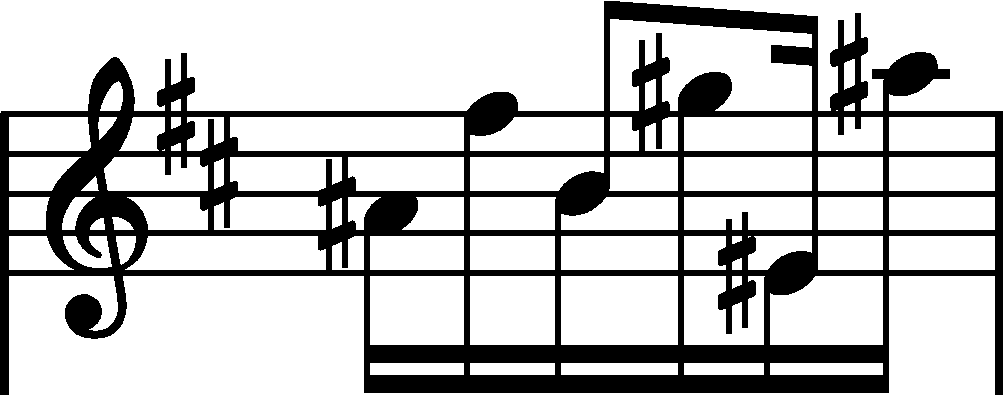



Issues : Errors resulting from corrections
|
b. 13-32
|
composition: Op. 28 No. 5, Prelude in D major
..
In each of b. 13-16 and 29-32, Chopin initially separated in A the 3rd and 5th semiquavers (b1-e category imprint: Differences between sources; Corrections & alterations issues: Errors in FE , Corrections in A , Errors resulting from corrections , Deletions in A , Accompaniment changes , Errors of FC |
|||||
|
b. 13
|
composition: Op. 28 No. 23, Prelude in F major
..
The version of GE resulted from an erroneous interpretation of the illegible correction concerning the pitch of this note in FC – the copyist most probably first wrote g1 and then turned it into f1, as a result of which both the 2nd line and the 1st space are covered. A correction (crossing-out) is also visible in A, in which, however, it almost certainly concerned rhythm – Chopin pondered whether to write the discussed note as a minim. The pencilled correction of the wrong clef (bass) visible in FC at the beginning of the bar – it opens the line in this manuscript – as well as a possible crossing-out of one of the notes (rather the bottom one, hence f1) on the 2nd L.H. quaver were performed by a later owner of FC, i.e. Hermann Scholtz. category imprint: Graphic ambiguousness; Differences between sources; Corrections & alterations; Source & stylistic information issues: Corrections in A , Errors resulting from corrections , Foreign hand additions in manuscripts , Deletions in A , Inaccuracies in FC , Alterations in CF |
|||||
|
b. 14
|
composition: Op. 26 No 2, Polonaise in E♭ minor
..
There are no naturals rising a category imprint: Interpretations within context; Differences between sources issues: Errors resulting from corrections , Omission of current key accidentals , Errors of A , Authentic corrections of FE |
|||||
|
b. 14
|
composition: Op. 21, Concerto in F minor, Mvt II
..
In the 2nd half of the bar GE1 initially included an erroneous slur, running from the b category imprint: Differences between sources issues: EE revisions , Errors resulting from corrections , Errors in GE , Authentic corrections of GE |
|||||
|
b. 15
|
composition: Op. 25 No 4, Etude in A minor
..
The second chord in the R.H. is a crotchet both in the upper and lower voices. Hence the lower voice has 9 quavers in this bar. The error resulted from hastily performed articulation corrections – Chopin would delete the staccato signs written inside the chords, which, in some cases, required rewriting the entire chord; omission of the quaver flag occurred exactly in the last rewritten chord. category imprint: Source & stylistic information issues: Errors resulting from corrections , Rhythmic errors , Errors of A |

 1 and g1-c
1 and g1-c . He then abandoned that voice; he crossed out the beam and the additional stem of the 5th semiquaver. However, he left the additional stem of the 3rd semiquaver; he even prolonged it over the crossed-out beam, which must have meant that the note should be a crotchet. The sense of such corrections was guessed neither by Fontana nor by the engraver of
. He then abandoned that voice; he crossed out the beam and the additional stem of the 5th semiquaver. However, he left the additional stem of the 3rd semiquaver; he even prolonged it over the crossed-out beam, which must have meant that the note should be a crotchet. The sense of such corrections was guessed neither by Fontana nor by the engraver of  and d
and d
